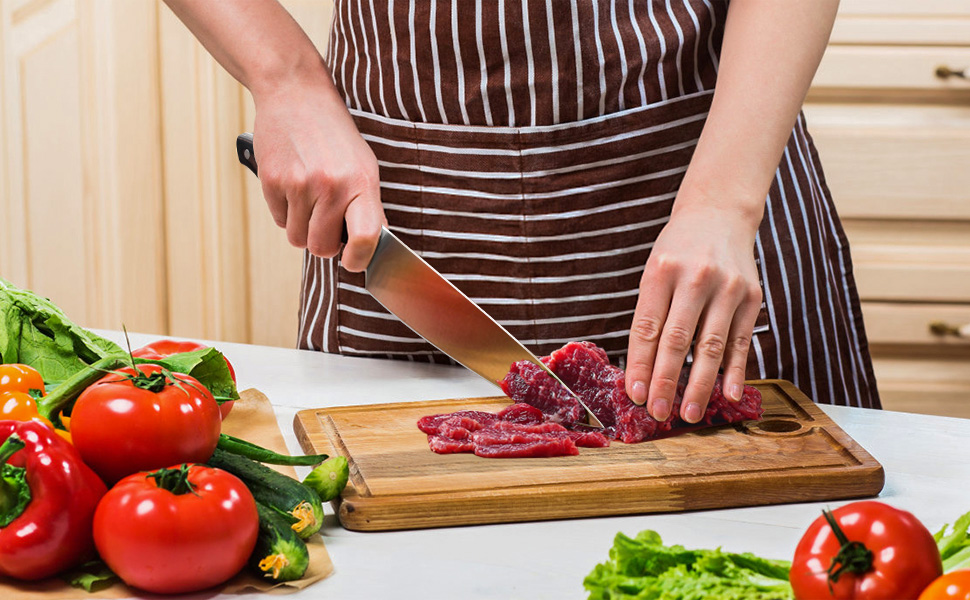If you’ve ever admired the tiny, precise vegetable cubes in high-end cuisines, known as the brunoise knife cut, you’re not alone. For chefs and home cooks alike, mastering this technique is not just about aesthetics but also about even cooking and impeccable presentation. Today, we’re breaking down how to create a brunoise knife cut with easy-to-follow steps, insights, and tips. Grab your knife, and lets dive in!

What Is a Brunoise Knife Cut?
The brunoise cut is one of the finest dicing techniques used in culinary arts. It involves chopping vegetables into uniform cubes, typically about 1/8 of an inch on each side. This fine dice is perfect for garnishes, soups, or dishes where precise cooking and visual appeal matter.
Origins of the Brunoise Cut
This cutting technique has its roots in French cuisine, where precision and uniformity are key. It is often used for aromatics like carrots, leeks, and onions, perfectly blending visual aesthetics with functionality.
Why Is the Brunoise Knife Cut Important?
There are several reasons why chefs and kitchens emphasize brunoise knife cut skills:
- Even Cooking: Uniform-sized pieces ensure even cooking, especially in soups or sauts.
- Professional Presentation: Impress your guests with perfect, neat cubes.
- Enhances Flavors: The even dice allows for a perfect balance of textures and flavors in each bite.
Choosing the Right Knife for Brunoise
Before you attempt a brunoise knife cut, ensure that you have the right tool. A high-quality, sharp chefs knife is essential. The blade should be long enough to allow for smooth and even chopping.
Check out this proper cutting guide to sharpen your overall knife skills.
How to Create a Brunoise Knife Cut Step by Step
- Prepare Your Vegetables: Wash and peel the vegetables youll be cutting. Vegetables commonly used for a brunoise cut include carrots, onions, and celery.
- Trim and Straighten: Cut the vegetable into manageable pieces and flatten one side to make a stable base.
- Create Thin Strips: Slice the vegetable into uniform strips, usually around 1/8 of an inch in width.
- Make Tiny Cubes: Turn the strips and dice them into perfect, symmetrical cubes.
Pro Tips for Success
- Keep Your Knife Sharp: A dull knife leads to messy cuts and increased effort.
- Use a Cutting Guideline: Train your eye to maintain uniformity by aligning your cuts.
- Take Your Time: Patience is key when aiming for precision with a brunoise knife cut.
For step-by-step visuals, visit this external guide on safely cutting fruits and vegetables.
Applications of the Brunoise Cut
Now that you’ve mastered how to create a brunoise knife cut, here are some perfect dishes to try:
- Soup Garnishes: Add finely diced vegetables to elevate any soup.
- Sauts: Ensure even cooking and a stunning appearance.
- Salads: Try this technique for your next salad. Heres a guide on cutting carrots.
Common Mistakes to Avoid
Achieving the perfect brunoise cut can be tricky. Here are common issues and how to address them:
- Uneven Cuts: Always start with stable vegetable bases.
- Dull Knives: Always sharpen your blade before starting to cut.
- Rushed Attempts: Precision takes time. Rushing may compromise quality.

FAQ Section
What vegetables can I use for brunoise cutting?
Brunoise works best on harder vegetables like carrots, celery, and bell peppers for its uniformity.
How sharp should my knife be?
A razor-sharp chef’s knife ensures safety and precision in making a brunoise knife cut.
Can I use brunoise cuts in desserts?
Yes, fruits like apples and pears can be brunoised to garnish desserts or create fruit-based salads.
Learning how to create a brunoise knife cut is not just a skillits an art. With practice and the right tools, anyone can master it and achieve culinary excellence. For more knife skills, check out cutting techniques for everyday use.
This article contains affiliate links. We may earn a commission at no extra cost to you.


